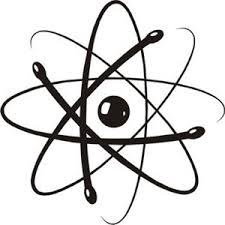记忆方法
记忆“electron”可以采用以下简单方法:
1. 构词法联想:将“e”联想到元素(element),“le”联想到“less”,因为电子是比原子(atom)更小的粒子,所以是“atom less”的粒子,即“电子”。
2. 形象记忆法:想象一个“e”(电子的“e”)旁边有一个“-wor”形似“轮子”(轮子转动的形象),代表电子在原子核周围旋转。
3. 读音和形状联想:电子的英文名读音中“le”听起来像“ler”,可联想到“小ler”,意指很小、细微的粒子。
使用上述任意一种方法,结合个人记忆习惯,可以帮助快速记忆“electron”。
1. 构词法联想:将“e”联想到元素(element),“le”联想到“less”,因为电子是比原子(atom)更小的粒子,所以是“atom less”的粒子,即“电子”。
2. 形象记忆法:想象一个“e”(电子的“e”)旁边有一个“-wor”形似“轮子”(轮子转动的形象),代表电子在原子核周围旋转。
3. 读音和形状联想:电子的英文名读音中“le”听起来像“ler”,可联想到“小ler”,意指很小、细微的粒子。
使用上述任意一种方法,结合个人记忆习惯,可以帮助快速记忆“electron”。
以上内容由AI生成, 仅供参考和借鉴
中文词源
electron 电子
electro, 电。-on, 离子,来自ion.
英语词源
- electron (n.)
- coined 1891 by Irish physicist George J. Stoney (1826-1911) from electric + -on, as in ion (q.v.). Electron microscope (1932) translates German Elektronenmikroskop.
权威例句
- 1. The structure of molecules can be seen under an electron microscope.
- 分子的结构可在电子显微镜下观察到.
- 2. An electron has a negative charge, a proton has a positive charge.
- 电子带负电荷, 质子带正电荷.
- 3. Freedom, gravity, ego, and electron are constructs.
- 自由, 万有引力, 自我中心以及电子都是概念.
- 4. A new technological marvel was invented at Cambridge University in England, the scanning electron microscope.
- 一项科技新奇迹在英国剑桥大学诞生了——这就是扫描电子显微镜。
- 5. The electron microscope uses a beam of electrons to produce images at high magnifications.
- 电子显微镜利用电子束形成高倍影像。
